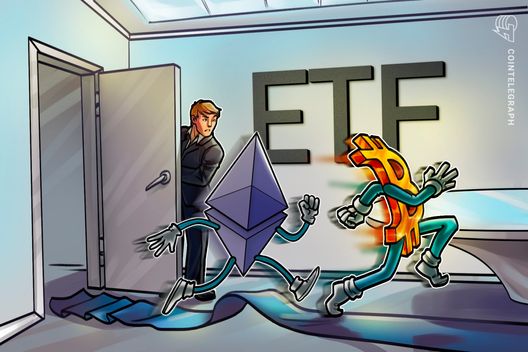In a world dominated by social media giants, the concept of SocialFi emerges as a beacon of hope, promising a revolution in user control and data ownership. Authored by Anurag Arjun, co-founder of Avail, the article explores the intriguing yet challenging landscape of decentralized social networks. While SocialFi seems attractive on paper, with the potential to reshape how users interact online and claim a share of the $200 billion social media ad market, the reality is far less optimistic.
As platforms like Friend.tech struggled to maintain user engagement—plummeting from a peak of 80,000 daily users to fewer than 10,000—the question arises: What is holding SocialFi back? Despite the enthusiasm from Web3 communities, decentralized social networks have not yet managed to appeal to the mainstream audience. Arjun notes fundamental challenges, including technical hurdles where existing blockchain technologies fall short of the rapid performance demands typical of social media.
“Social media users expect instant results…consider this: Ethereum handles just 15-20 transactions per second, while a platform like TikTok sees 25 million daily uploads.”
This frustration is compounded by user experience issues; many SocialFi platforms confront new users with a confusing interface steeped in crypto jargon, resulting in alarming abandonment rates—92% within the first 30 days, according to a 2023 DappRadar study. Unlike the seamless experiences crafted by Web2 titans like Meta and TikTok, SocialFi platforms often fail to entice the casual user.
The fragmentation within the current Web3 infrastructure only exacerbates these issues. With various platforms existing in silos, users find it difficult to engage across networks, not unlike if Gmail users were forced to pay to email friends on Outlook without carrying over their contacts. The potential for interoperability remains largely unrealized, presenting a barrier to mass adoption.
However, as highlighted by Arjun, solutions are on the horizon. Emerging technologies such as modular blockchain architecture promise to build infrastructure specifically for social applications, helping to eliminate lingering technical challenges. By offering low-cost interactions and ensuring data portability, SocialFi might finally provide a user-centered experience that aligns with user expectations.
The future of SocialFi hinges on its ability to marry the principles of decentralization with the user-friendly features characteristic of successful Web2 platforms. If these barriers are effectively addressed, the horizon for a new era of social networking may change dramatically, offering not just an alternative but a distinctly enhanced online social experience.
Understanding the Challenges and Opportunities of SocialFi
SocialFi is positioning itself as a revolutionary alternative to traditional social media, yet it faces significant hurdles that impact its adoption and user experience. Here are the key points discussed in the article:
- Current State of SocialFi:
- SocialFi aims to empower users by giving them control over their content and monetization.
- Despite the potential, platforms like Friend.tech have seen a drastic drop in users, signaling challenges in retaining mainstream engagement.
- Technical Challenges:
- Blockchain technology struggles with the speed required for social media interactions, managing far fewer transactions per second than established platforms.
- Users are deterred by delays and high transaction fees, preventing smooth interactions.
- User Experience Issues:
- SocialFi platforms often present a confusing entry point for mainstream users, filled with crypto jargon and complex processes.
- Many users abandon these platforms shortly after creating accounts due to the steep learning curve.
- Fragmentation Across Platforms:
- The lack of interoperability between different SocialFi applications leads to user siloing and a disjointed experience.
- Real-world analogy: If users had to pay to communicate across different email providers without portability of contacts, this illustrates the current state of SocialFi.
- Need for Purpose-Built Infrastructure:
- SocialFi requires foundation tailored to social networking, with scalable architecture to accommodate extensive user bases.
- Recent platforms are adopting modular blockchain architecture to better serve social applications.
- User-Centric Approach:
- When effectively implemented, SocialFi can deliver true ownership of identity and content to users.
- This shift could lead to innovative revenue-sharing models and enhanced creator monetization opportunities.
The successful evolution of SocialFi hinges on overcoming existing technical barriers and reimagining user experiences to attract a broader audience beyond crypto enthusiasts.
The Future of SocialFi: Opportunities and Challenges in the Decentralized Social Networking Landscape
The concept of SocialFi is undoubtedly compelling, offering a potential disruption to the current landscape of social media dominated by massive corporations like Meta. Yet, while the promise of user control and monetization shines brightly, the reality has proven to be less favorable. Many platforms, like Friend.tech, illustrate this stagnation, with user engagement dropping off significantly after initial excitement. This raises a pertinent question: what are the underlying factors contributing to this trend, and who stands to benefit—or face challenges—from the rise of SocialFi?
Competitive Advantages of SocialFi
One of the main draws of SocialFi is its promise of genuine user ownership over content and data—a stark contrast to traditional platforms where user-generated content is monetized largely without fair compensation. By leveraging blockchain technology, SocialFi aims to afford users a stake in the lucrative advertising markets, which can lead to more equitable revenue distributions. Furthermore, SocialFi presents an opportunity for creators to port their audiences and monetize their work in innovative ways, such as automated revenue sharing models that could revolutionize virality in content creation.
Disadvantages and Adoption Barriers
However, the excitement is tempered by significant challenges. Technical limitations relating to blockchain’s throughput make it difficult for social platforms to match the seamless user experience seen in Web2 giants like TikTok and Instagram. High transaction fees and long confirmation times discourage casual users who expect immediate feedback, leading to a disheartening 92% abandonment rate after just 30 days. The user experience in most SocialFi platforms tends to be cumbersome, often riddled with crypto jargon and unfamiliar processes that alienate non-crypto natives.
Target Audience and Potential Pitfalls
The early adopters of SocialFi appear primarily among crypto enthusiasts, but for mainstream appeal, SocialFi platforms must overcome substantial usability barriers to draw in general users. Without addressing these issues, SocialFi risks remaining a niche solution that fails to capture the broader audience potential. This situation poses a threat for existing social media giants, whose dominant market positions might initially seem secure; however, the increasing demand for privacy and user-centric models may create opportunities for newer platforms to chip away at their user base.
Future Directions: Decentralization and Interconnectivity
For SocialFi to reach its potential, the sector needs a fundamental rethinking of its infrastructure. An integrated approach that allows cross-platform portability and enhances user experience could pave the way for future success. Innovations like modular blockchain architecture are already gaining traction, promising faster, more efficient interactions while maintaining user privacy. If these improvements come to fruition, they have the potential to redefine how users connect and interact online, creating a landscape that could benefit not only decentralized platforms but also users seeking more control over their online presence.









